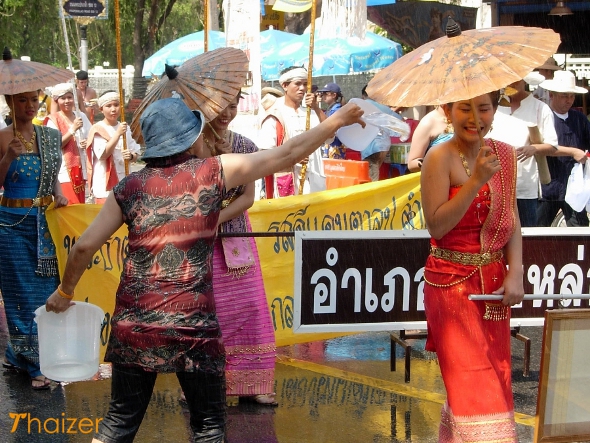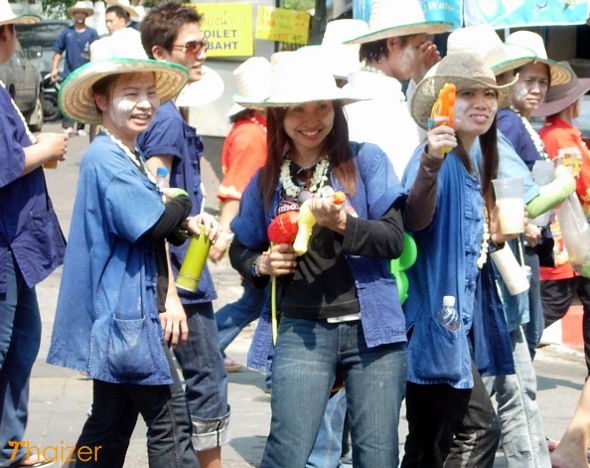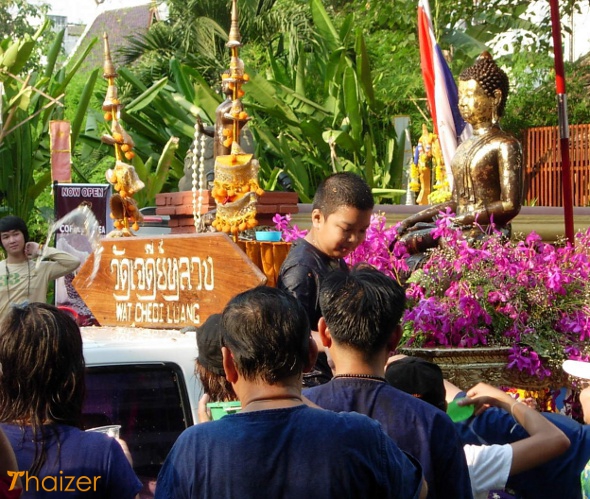The annual Songkran Water Festival is one of those events that has to be experienced in person to begin to appreciate the enormity of the spectacle and the uniqueness of the occasion. In Thailand, Songkran is an annual nationwide party, but beyond the image of playful water-fights it’s an event steeped in tradition and meaning for Thai Buddhists.

Doused with water during the Songkran parade in Chiang Mai
The word songkran is derived from the Sanskrit language and means ‘move into’, referring to the orbit of the sun moving into each of the houses of the zodiac. In Thailand, the word songkran has come to be identified specifically with the sun moving into Aries in April (usually on the 13th) marking the end of a 12 month cycle and the beginning of a new solar year. Thailand still celebrates the Western New Year on January 1st, but Songkran remains as the traditional Thai New Year festival.
Today, Songkran is widely associated with water throwing. This can go on for just one day in places in the south, but can last for a week or more in areas of the north. The water association has a number of meanings. Water is thrown to cleanse and purify all the ills, misfortune and wrongdoing of the previous year, thus providing a clean slate for the new year ahead. Throwing water during Songkran is also associated with fertility. It is a time when Thai people traditionally looked to bring on the rains for rice cultivation and ensure a successful and bountiful harvest. The festivities were also a time for courtship in days gone by and the trend continues today, though not always in quite such a traditional manner!
Songkran is officially a three day festival. On the first day, firecrackers are often lit to send the old year on its way and ward off evil spirits, whilst homes and gardens are given a good cleaning. The most important aspect of the day is the cleaning of Buddha images. Many towns and cities parade important Buddha images from local wats through the streets. Local inhabitants then gather to throw lustral water scented with jasmine flowers over the images. The general mayhem of water throwing begins on this day, with the streets of many towns thronged with people dousing each other with water from buckets, hoses and toy water pistols.

Water pistols at the ready
The second day belongs to neither the new year or the old year and it is thought to be particularly bad luck to argue on this day. Sand is taken to the wat to build stupas or pagodas which in turn are decorated with long colourful pennants. Many of these pennants bear images of animals from the Oriental zodiac. This day is also used to prepare food which will be given the following day to monks and temples for merit-making.
The third day is the equivalent of New Year’s Day in the West. Merit-making is particularly important on this day and many people visit temples to offer food to the monks, bathe Buddha images and place pennants on the sand stupas. It is also the last opportunity for people to let their hair down and the party starts early and continues until dusk.

Pouring water over Buddha images during Songkran
As well as marking the New Year, Songkran is also a time for thanksgiving and reflection. Lustral water is gently poured over the hands of elders and other important people. Family is important in Thai life and never more so than at Songkran which is a time for family gatherings and reunions.